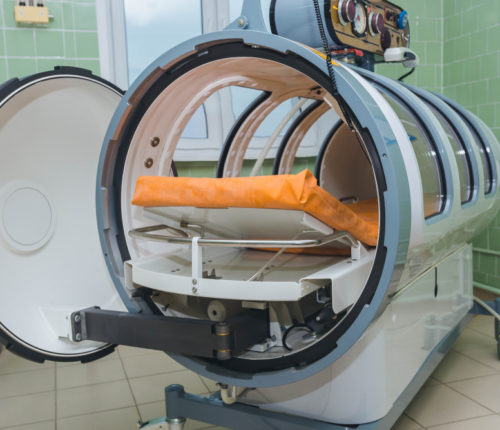
Hyperbaric Oxygen Therapy
Some birth injuries can be resolved through intensive participation in various therapies, while other birth injuries can’t be cured. Therapy, however, helps to make the child more comfortable and functional. Just as there are varying forms of birth injuries, there are varying forms of therapy. These therapies range from something common like occupational therapy, to something maybe a little more complex like hyperbaric oxygen therapy.
What is Hyperbaric Oxygen Therapy?
Hyperbaric oxygen therapy (HBOT) is a procedure in which a hyperbaric chamber is filled with 100 percent oxygen. Then, it is pressurized to a greater than one percent atmosphere (usually 2-3 times higher than normal air pressure). The patient is put in this chamber for anywhere from 90-120 minutes. The therapy involves the patient breathing in pure oxygen in the pressurized environment. It is typically conducted as an outpatient procedure however can be done while inpatient in a hospital.
There are two different forms of chambers:
- Monoplace chamber: The monoplace chamber (unit designed for 1 person) or the multiplace chamber (room designed for several people). The monoplace chamber is often less expensive as it only pressurizes one room. However, the downside is that the patient has less interaction with the medical personnel.
- Multiplace chamber: In the multiplace chamber, the staff can interact with the patient during the procedure. Staff may require controlled decompression afterward depending on how long they were in the room with the patient. In the multiplace chamber, oxygen is administered through a face mask or a clear hood over the head.
Both environments, monoplace or multiplace, have the same benefits.
What are the Benefits of HBOT?
With the use of pure, 100 percent oxygen, babies can benefit from HBOT in ways that traditional methods of treatment may not supply. For instance, hyperbaric oxygen therapy helps to treat patients with brain damage, cerebral palsy, or those recovering from a stroke.
If you believe your baby to be the victim of a birth-related brain injury including an infant brain bleed, intracranial hemorrhage, or oxygen deprivation, this may be a beneficial form of treatment as it decreases pressure and encourages normal tissue oxygen levels. It is also useful for infants who have hypoxic-ischemic encephalopathy, or HIE. HBOT is an option that may optimize your HIE baby’s recovery chances.
What Outcome Can Be Expected from HBOT?
Hyperbaric oxygen therapy is considered an experimental treatment designed to decrease the pressure that the patient experiences in the brain. Often patients (or rather families of patients) are unsatisfied with the outcomes of the treatment, not because there were any adverse reactions but because they expect instant success.
Often, the rate of patients who try this kind of therapy have so many different varying types of brain injuries – from mild to severe, from acute to chronic phases, with differing degrees of the type of disability – that it’s hard for physicians to give an accurate assessment of what to expect after therapy.
If Outcomes Vary, Why Do Patients Want This Therapy?
At the very least, hyperbaric oxygen therapy heals the existing wounds that may exist in tissue. If a brain injury causes the brain not to signal clots or wounds within the tissue to be healed, the increase of oxygen carried in the blood plasma allows those wounds to be healed. This is especially important if there are wounds, excess fluid or blood clots in the brain as the influx of oxygen allows the body to heal those areas.
If your child has a brain injury or cerebral palsy, there may be large sections of tissue that are dormant. Increasing oxygen in the body overall brings life back into those areas. Hyperbaric oxygen therapy isn’t recommended as the only therapy for children with these birth injuries, but rather part of a comprehensive treatment approach to help make your child feel and function better overall.



